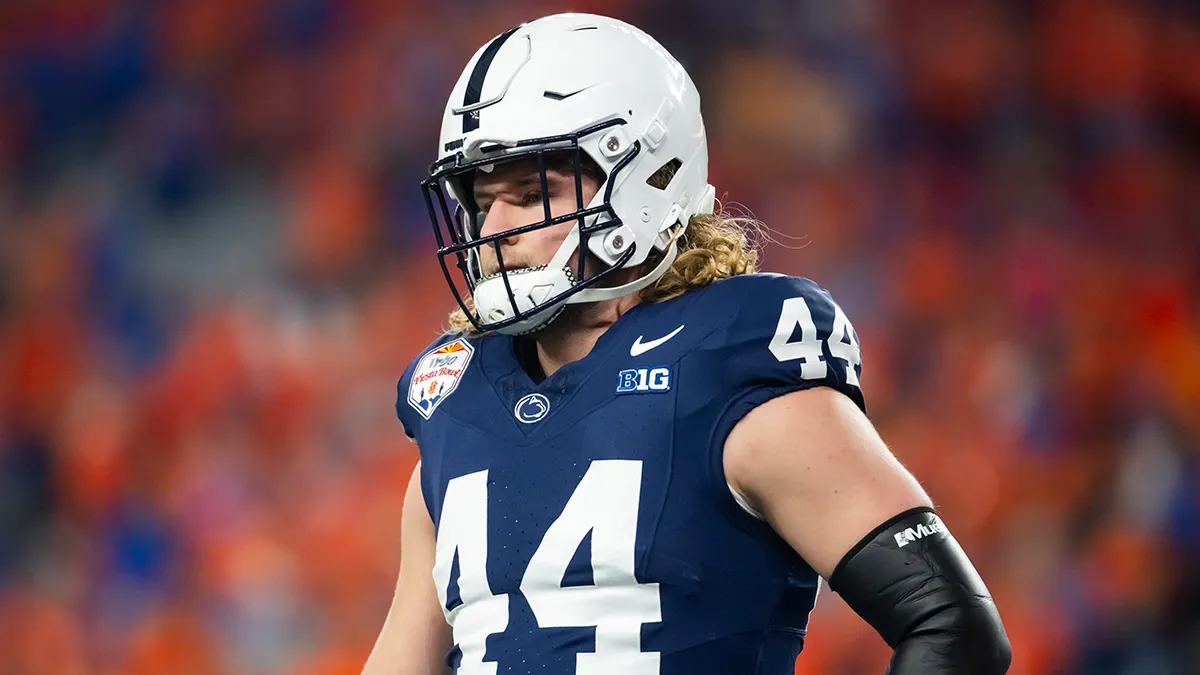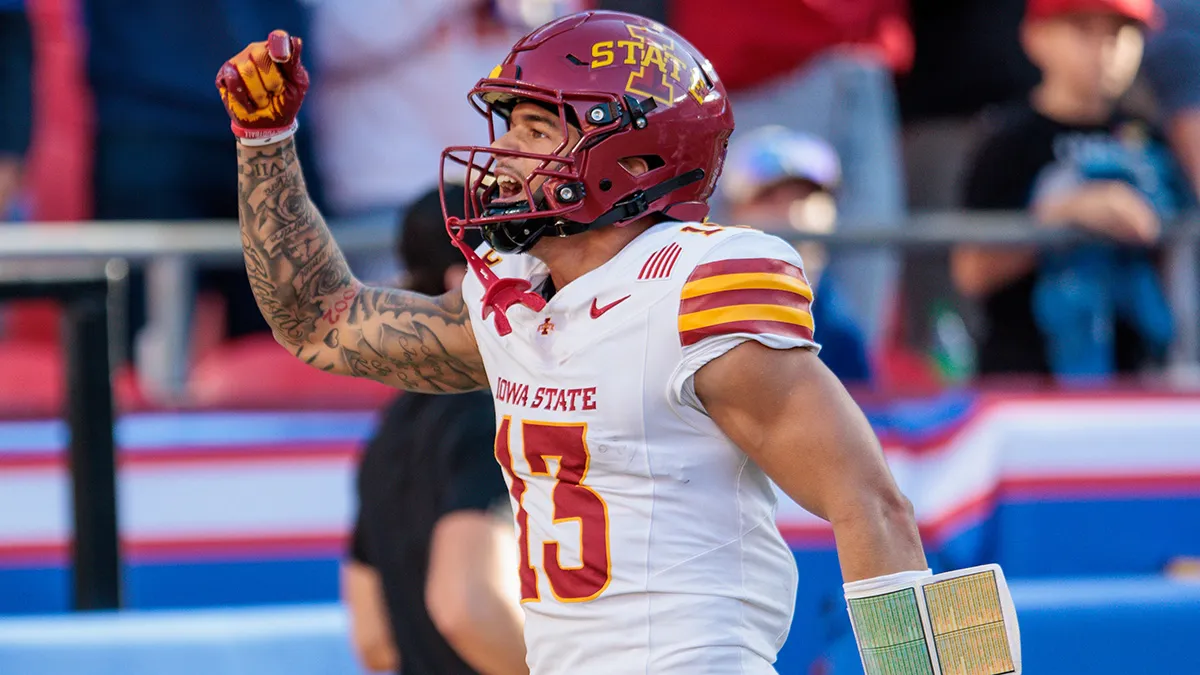The Patriots have had one glaring need offensively since they set out on the team-building process in earnest this offseason: a big receiving target who can threaten defenses vertically.
We've written about it extensively and spoken about it ad nauseum on our broadcasts and podcasts. They needed size and speed. They've found some of each in acquiring DeVante Parker from the Dolphins over the weekend. And they've done so on the cheap.
The Patriots have been bargain shopping this offseason. At receiver, Allen Robinson was beyond their price range. Lower-level talents like Marquez Valdes-Scantling and D.J. Chark still pulled in average annual values of about $10 million per season on their free-agent deals.
Stay in the game with the latest updates on your beloved Boston sports teams! Sign up here for our All Access Daily newsletter.
In Parker, they've acquired the skill set they sought for about $6 million in each of the next two seasons. They had to give up a 2023 third-round pick to get him, but they got a 2022 fifth-rounder back.
Given the way the league values future picks (a future third has about the same trade value as a current fourth-rounder), this trade essentially functioned as a pick-swap move, which is the kind of deal the Patriots have executed many times over the last decade.
Like many of those other pick-swap trades, this one brings a player to Bill Belichick's doorstep who carries real upside.
"Can stretch the field and uses his body well," one AFC executive told NBC Sports Boston following the Parker deal.
New England Patriots
Find the latest New England Patriots news, highlights, analysis and more with NBC Sports Boston.
He may not be the most nuanced route-runner in the receiving room at One Patriot Place, but the priority was finding quarterback Mac Jones a weapon with a wide catch radius and an ability to draw coverage.
Patriots Talk: How adding DeVante Parker impacts future Patriots plans | Listen & Subscribe | Watch on YouTube
If Parker can be the player he was three seasons ago -- when he played under former Patriots assistant and Dolphins offensive coordinator Chad O'Shea and posted more than 1,200 yards receiving -- then Jones will have that guy. Parker will have to stay healthy in order for that to happen (he missed nine games over the last two seasons), but he's 29 years old and has proven he has the ability to win one-on-one on the outside.
Patriots fans will remember what Parker did to Stephon Gilmore in the regular-season finale in 2019, when he went off for eight catches on 11 targets for 137 yards. If he comes anywhere close to resembling that kind of player in New England, he could have a massive impact on the overall productivity of the Patriots offense. And Jones in particular.
Curran: Analyzing Parker's on-field and financial fit with Pats
The reason why the Patriots have been looking for a player like Parker -- what N'Keal Harry was drafted to be -- is because of the way the rest of their offensive attack functions.
As the NFL has shifted to more two-high-safety coverages to limit explosive passing plays, the Patriots have been among the teams least likely to see those alignments from opposing secondaries.
Why? Because teams would rather insert one of those safeties closer to the line of scrimmage to defend New England's potent rushing attack.
That left Patriots receivers on islands, one-on-one, against opposing corners. But defenses were fine with that trade-off -- fewer bodies deep in order to devote more bodies to limiting yards on the ground -- simply because the Patriots didn't have passing-game options who could take advantage of those boundary man-on-man battles consistently.
Nelson Agholor was signed to be that type of player after a career year for the Raiders in 2020. But he ended up with just four games of 50 yards receiving or more last season, and opposing defenses didn't feel he was an effective enough player to command multiple sets of eyes in coverage. Teams weren't worried about him.
At the Super Bowl, I asked an AFC defensive coach who game-planned for the Patriots in 2021 how Belichick might be able to help out his young quarterback going into Year 2. We saw what a high-end weapon did for Bengals quarterback Joe Burrow in his second pro season.
"It would help," the coach said of adding a No. 1 receiver. "(Jones) needs guys who can get open. They don't have guys that can get down the field and have him throw it up for an explosive pass. You need somebody better.
"Do you need [Ja'Marr] Chase? No. But the best receivers they had this year were Hunter Henry and [Jakobi Meyers] inside. Agholor is just not a consistent guy. He's not going to beat you."
Defending the deep portion of the field against the Patriots "wasn't a huge concern," the coach explained.
"They're going to command certain looks in the box because of the way they run the ball," he added. "They've got to have somebody out there because they're going to have opportunities to throw it.
"... They're going to have opportunities to throw down the field based on what they force the defense to do. They need someone who can catch it."
Parker, if healthy, should be that guy. If he is, he could help make Jones a more efficient deep passer.
As a rookie, Jones was 21st in the NFL on yards per deep attempt (12.1 yards per pass that traveled 20 yards or more down the field). Including playoffs, he was 28th in passer rating on deep passes (72.4), which was well below league average on those types of throws (92.7) and well below his own rating for any other level of pass (96.7 from 10-19 yards, 95.2 from 0-9 yards, 104.6 behind the line).
In 2019, per Pro Football Focus, Parker was fourth in the NFL with 478 yards on passes targeted 20 yards or more down the field, catching 14 of 29 deep targets. He was tied for second in the league that year with five deep touchdowns, and among players with at least 20 deep targets that year he was second in quarterback rating produced (134.0).
In the last two seasons, as Parker has missed time due to injury, and as he's operated in more of a quick-hitting RPO-style attack, he's been targeted deep much less often. But he's remained relatively effective in those spots. He caught 10 of 20 deep attempts combined in those two seasons for 286 yards and one touchdown for a quarterback rating when targeted of 112.5.
Parker's presence also could help Jones when he's blitzed. Jones saw extra rushers at the second-highest rate in the NFL last season (34.5 percent), in part because of the lack of an explosive-play threat to make defenses pay for bringing extra defenders as pass-rushers.
That kind of "No. 1" option, if that's what Parker becomes, could give Jones the confidence he needs to throw in his direction when under pressure no matter how tight the coverage.
If defenses eventually sense that they need to give cornerbacks help over the top on Parker, that should open things up for the Patriots running game.
Damien Harris (31.7 percent) and Rhamondre Stevenson (41.4) both saw eight or more defenders in the box on over 30 percent of their carries this year, according to Next Gen Stats, which slotted both in the top 10 at their position in that category. With a wideout who can potentially draw a defender out of the box, the ground attack in Foxboro should be even more formidable.
Parker's acquisition not only gives Jones a go-to target down the field and in contested situations, but he also should allow Jones to reap the benefits of having an even stronger running game, which can lead to more effective play-action fakes and better pass protection.
All of this, of course, is contingent on Parker being on the field and impactful enough to change the geometry of opposing defenses. Whether or not that will be the case is to be determined.
But at least he has the potential to do that. Prior to this weekend's trade, the Patriots were lacking in that department.


